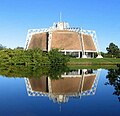world.wikisort.org - USA
Central Florida is a region of the U.S. state of Florida. Different sources give different definitions for the region, but as its name implies it is usually said to comprise the central part of the state, including the Tampa Bay area and the Greater Orlando area, though in recent times the Tampa Bay area has often been described as its own region, with "Central Florida" becoming more synonymous with the Orlando area (most notably, this is what the local news channels in each respective metro area call their region).[1][2]
Central Florida | |
|---|---|
Region | |
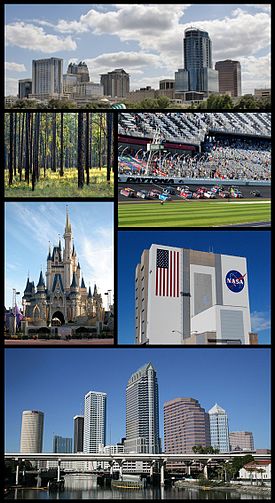 Central Florida Images top from bottom, left to right: Orlando Skyline, Ocala National Forest, Daytona International Speedway, Walt Disney World, Kennedy Space Center, Tampa Skyline | |
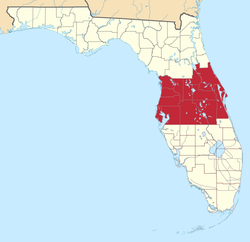 Central Florida, part of the Florida megaregion | |
| Country | |
| State | |
| Largest city | |
| Population (2010) | 8,211,912 |
It is one of Florida's three directional regions, along with North Florida and South Florida. Under the previously mentioned "usual" definition, it includes the following counties: Brevard, Citrus, Hardee, Hernando, Hillsborough, Indian River, Lake, Manatee, Orange, Osceola, Pasco, Pinellas, Flagler, Polk, Seminole, Marion, Sumter, and Volusia though Citrus, Hernando, Hillsborough, Manatee, Pasco, Sarasota, and Pinellas are also considered to be the Tampa Bay area.
Geography
Like many vernacular regions, Central Florida's boundaries are not official or consistent, and are defined differently by different sources. A 2007 study of Florida's regions by geographers Ary Lamme and Raymond K. Oldakowski found that Floridians surveyed identified Central Florida as comprising a large swath of peninsular Florida.[3] This area encompassed the interior, including the Orlando metropolitan area, and coastal stretches from the Big Bend south to the Tampa Bay Area in the west and from Flagler County south to Martin County in the east. In addition, North Central Florida has emerged as a vernacular region representing the interior area in the northern part of the state.[3]
Central Florida is one of Florida's three most common directional regions, the others being North Florida and South Florida. Lamme and Oldakowski note that the directional region is more commonly used in the interior areas rather than on the coast.[4] In fact, while coastal areas often have their own regional vernacular identities such as the Space Coast and the Nature Coast, no vernacular regions were reported on the interior of the state other than Central Florida.[3]
Enterprise Florida, the state's economic development agency, identifies "Central Florida" as one of eight economic regions used by the agency and other state and outside entities, including the Florida Department of Transportation. This definition covers much of the same area as in Lamme and Oldakowski's survey, with some exceptions. It excludes the Tampa Bay Area and North Central Florida, as well as the southern coastal counties (the Treasure Coast, which is included in "Southeast" or "South Florida"). The Central region includes the Orlando metropolitan area (Orange, Lake, Osceola, and Seminole Counties), Marion and Sumter Counties in the interior, and Flagler, Volusia, and Brevard Counties on the coast.[5]
The central cities of both metropolitan areas (Orlando and Tampa) are in close proximity (85 miles (137 km)), and as a result, their two metropolitan areas blend together in the area of Lakeland to make up a larger contiguous population center often referred to as the I-4 corridor.[6][7] This is a population concentration that stretches from Tampa Bay on the west coast to Palm Coast and Cape Canaveral on the east coast of the state.
With the exception of hill terrain in Mount Dora, southern Lake County, Polk County (Lake Wales Ridge) Pasco County, and Hernando County (Brooksville Ridge). Central Florida is mostly flatland with significant amounts of open space and over 1,500 lakes and ponds. There is a mixture of wetlands, Cypress, Oak, Maple and Pine forests, pastures, prairies and coastline.[8]
Major rivers include the St. Johns River, the Ocklawaha River, the Halifax River, and the Econlockhatchee River. Major lakes include Lake Apopka, Lake Tohopekaliga, East Lake Tohopekaliga, Lake Louisa, Lake Monroe, Lake Jessup, and the Butler Chain of Lakes. There are over 100 miles (160 km) of coastline in Central Florida along the Atlantic Coast.[9] Major beaches include Canaveral National Seashore, New Smyrna Beach, Daytona Beach, Cocoa Beach, and Indialantic Beach near Melbourne.
Climate
Hurricanes are a threat to the coastal cities as evidenced by the 2004 hurricane season, which brought three major hurricanes to the Central Florida area: Charley, Jeanne, and Frances.

Winters are dry and temperate with the average winter high temperature in Orlando being 71 °F (22 °C) and the average winter low temperature being 49 °F (9 °C).[10][11] Summers are hot and humid with high temperatures averaging 92 °F (33 °C) and low temperatures averaging 75 °F (24 °C). Peak summer heat generally arrives in early June and continues to early October.[12][13]
The combination of high temperatures, high humidity, and opposing sea breezes from both the Gulf and Atlantic coasts, results in significant thunderstorm activity from June to September for the interior counties. Central Florida records more lightning strikes per area than any other region in Florida, and Florida records more lightning strikes than any other state in the US. As a result, Florida, and more specifically, Central Florida, is often referred to as the "Thunderstorm capital of the USA",[14][15] or "Lightning Alley".
These severe thunderstorms often make Central Florida prone to many tornadoes. However, they are usually small, short lived, and almost always rated as EF0 or EF1 size storms.
Central Florida's climate is subtropical, and is similar to that of South Texas. Unlike South Florida, where temperatures below 32 degrees practically never occur, Central Florida does see occasional freezing temperatures in the winter. As a result, Central Florida cannot accommodate the same tropical plants found in Southern Florida. However, winters are still considered very mild by United States standards. Central Florida’s typical high temperatures in the winter are in the 60s to low 70s. The low temperatures are in the high 40s and low 50s.
History
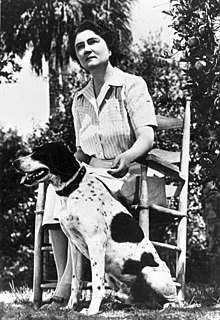
At the end of the Civil War, aside from the cattle, cotton, and coastal lands, much of Central Florida was wetlands. It took a major drainage project financed by businessman Hamilton Disston in the 1880s to make these wetland areas available for settlement.
Sanford was incorporated in 1877 as a port city at the Lake Monroe intersection and the St. Johns River. It was envisioned as a transportation center; the city's founder, Henry S. Sanford, nicknamed it "the Gate City of South Florida". It became a hub for shipping agricultural products, which earned the city another nickname, "Celery City".
Kissimmee, originally named Allendale, after Confederate Major J.H. Allen, who operated the first cargo steamboat on the Kissimmee River, boomed in the 1880s. It was the headquarters of Hamilton Disston's drainage company. The city was an important regional steamship port, owing that status to its location on Lake Tohopekaliga. Expanding the railroads into Central Florida eliminated the need for Kissimmee's steamship industry.[16]
The Great Freeze of 1894-1895 ruined citrus crops, which had a detrimental ripple effect on the economy.[17]
The hard-packed sand of Volusia County's beaches lent itself to auto races beginning in 1903 before paved roads were common, leading to the area's reputation for cars and racing. Ormond Beach was a popular spot for those who liked fast cars after the turn of the 20th century because the hard-packed beach was ideal for going fast. The same beach had led to the development of a tourist resort by Henry Flagler. It later attracted Flagler's former business partner John D. Rockefeller, who had a winter home in Ormond.

During and after World War II, the U.S. Army Air Forces (U.S. Air Force after 1947) and the U.S. Navy established several training facilities and operational bases in the region, mainly for aviation activities, followed by space exploration sites. In the late 1940s, the U.S. military established a missile testing facility on Merritt Island near Cape Canaveral. The land was largely undeveloped and the agreeable climate allowed for year-round operations. When NASA later searched for a long-term base in the 1960s to launch spacecraft, it chose the Merritt Island site next to Cape Canaveral for its access to the testing facility and nearby communities. NASA purchased over 100,000 acres (400 km2) of land for the Kennedy Space Center.
Deltona was developed in 1962 as a planned retirement community. It is now the largest city in Volusia County.


The construction of the Walt Disney World Resort was a transforming event for greater Orlando. Walt Disney wanted a location with abundant available land that was more accessible for the residents of the eastern United States to visit. Not only was there ample land in Central Florida, but it was inexpensive, and the inland location offered some protection from hurricanes. Plans were announced in 1965, and the theme park opened to the public in 1971.[16]
Culture and attributes
Lamme and Oldakowski's survey identifies several demographic, political, and cultural elements that characterize Central Florida and distinguish it from other areas of the state. While people from all parts of the state associated their area as part of the South, people in the southern part of Central Florida did not typically identify their area as part of "Dixie", while people in northern Central Florida did. People from Central Florida usually did not consider their region part of the Bible Belt.[3]

Politically, while North Florida overwhelmingly was considered conservative and South Florida was considered more liberal, the majority of Central Florida residents (52%) considered their area moderate; 41% considered it conservative, and 7% liberal.[18] Lamme and Oldakowski's survey tracks with Barney Warf and Cynthia Waddell's studies of Florida's political geography during the 2000 Presidential election.[18][19] Central Florida's economy is very similar to that in South Florida. Compared to the more diversified North Florida economy, tourism is by far the most significant industry in Central and South Florida, along with a much smaller but significant agricultural industry.[20]

Lamme and Oldakowski's survey also found some cultural indicators that characterize Central Florida. In general, Central Florida was similar to North Florida and differed from South Florida in these measures. In Central and North Florida, American cuisine was the most popular food, in contrast to South Florida where ethnic foods were equally popular.[21] Additionally, while there was little geographical variation for most styles of music, there was regional variation for both country and Latin music. Country was popular in Central and North Florida, and less so in South Florida, while Latin was less popular in Central and North Florida, and more so in South Florida.[21]
Demographics
In 2009, the estimated total population of the Central Florida, including the populations of Orange, Seminole, Osceola, Brevard, Volusia, and Lake Counties region was 3.3 million people.[22] If the populations of Polk and Sumter counties were included, the estimated population would be 3.969 million people.[citation needed] Explosive growth has fueled Central Florida for the past thirty years.
As of 2007 there were 70,000 Asians in Central Florida according to the U.S. Census. There were almost 1,900 Japanese persons, making up 3% of the Asians.[23]
Cities
Selected cities in Central Florida arranged by population:
| City | 2010 population[24] | 2000 population | County |
|---|---|---|---|
| Tampa | 335,709 | 303,447 | Hillsborough |
| St. Petersburg | 244,760 | 248,232 | Pinellas |
| Orlando | 238,300 | 185,951 | Orange |
| Clearwater | 107,685 | 108,789 | Pinellas |
| Palm Bay | 103,190 | 79,413 | Brevard |
| Lakeland | 97,422 | 78,452 | Polk |
| Deltona | 85,182 | 69,543 | Volusia |
| Largo | 77,648 | 69,371 | Pinellas |
| Melbourne | 76,068 | 71,382 | Brevard |
| Daytona Beach | 61,005 | 64,112 | Volusia |
| Kissimmee | 59,682 | 47,814 | Osceola |
| Port Orange | 56,048 | 45,823 | Volusia |
| Sanford | 53,570 | 38,291 | Seminole |
| Ormond Beach | 38,137 | 36,301 | Volusia |
| Clermont | 35,211 | 9,333 | Lake |
| Oviedo | 33,342 | 26,316 | Seminole |
| Sebastian | 21,929 | 16,181 | Indian River |
| Ocala | 56,315 | 45,943 | Marion |
| Palm Coast | 32,832 | 75,180 | Flagler |
Economy
Agriculture has occupied a large portion of Central Florida's economy, with winter strawberries,[25] citrus, timber, vegetables,[26] and aquaculture[27] all making major contributions.

Tourism is a large contributor to Central Florida's economy.
The area has economically diversified in the past decade. As a high-tech industrial hub, Metro Orlando has the seventh largest research park in the U.S., Central Florida Research Park, the engineering and business school of the University of Central Florida. It has defense companies such as Lockheed Martin and Siemens.[28]
Medical research is prominent at Tampa's University of South Florida and Orlando's University of Central Florida, as well as the Sanford-Burnham Medical Research Institute biomedical research facility.[29] USF in particular is a national leader in cancer and dementia research.
The Tampa Bay area has become a center of high-tech manufacturing and research,[30][31] while both Orlando and the Tampa Bay area are centers for the financial industry, especially insurers and back-end operations for large banking companies.


Active military installations in the region include Patrick Space Force Base and Cape Canaveral Space Force Station located on the Atlantic coast; MacDill Air Force Base, Coast Guard Air Station Clearwater and Coast Guard Sector St. Petersburg on the Gulf Coast; and Naval Support Activity Orlando, the Navy Pinecastle Impact (Bombing) Range, and the Avon Park Air Force Range located inland. These are augmented by major commands that are tenant activities at these installations, such as the headquarters for United States Central Command (USCENTCOM) and the headquarters for United States Special Operations Command (USSOCOM) at MacDill AFB, the Naval Ordnance Test Unit and Coast Guard Station Port Canaveral at Cape Canaveral SFS, and other Active, Reserve, Army National Guard, and Air National Guard activities that are located as either stand-alone facilities or as tenants on the active duty installations.

Additional former facilities that have since been closed and converted to civilian use include Hillsborough Army Air Field, a World War II training range which is now part of a neighborhood, Busch Gardens Tampa Bay, and the University of South Florida; Naval Air Station Sanford, which closed in 1968 and is the present day Orlando-Sanford International Airport; McCoy Air Force Base, which closed in 1975 and is the present day Orlando International Airport; and Orlando Air Force Base, which was transferred to the Navy in 1968 and renamed Naval Training Center Orlando until its BRAC-directed closure in 1999 and conversion to the present day Baldwin Park neighborhood.

The other major U.S. Government installations in Central Florida is the Kennedy Space Center, a NASA facility located adjacent to Cape Canaveral SFS, and the Department of Veterans Affairs (VA) Outpatient Clinic at Baldwin Park (former Orlando AFB Hospital / former Naval Hospital Orlando) and the VA Hospital at Lake Nona.
Attractions


Theme parks
- Walt Disney World Resort, which includes Magic Kingdom, Epcot, Disney's Hollywood Studios, Disney's Animal Kingdom, Disney's Typhoon Lagoon and Disney's Blizzard Beach
- SeaWorld Orlando
- Universal Orlando Resort, which includes Universal Studios Florida, Universal's Islands of Adventure and Universal's Volcano Bay
- Busch Gardens Tampa and Adventure Island
- Legoland Florida
- Kennedy Space Center
- Gatorland
- Fun Spot America Theme Parks
Zoos
Central Florida has four major zoos, the Central Florida Zoo and Botanical Gardens in Sanford,[32] the Brevard Zoo in Melbourne, the Busch Gardens Tampa Bay animal park, and Lowry Park Zoo in Tampa. There are also two theme parks in Orlando featuring animals, albeit to a much lesser extent: Disney's Animal Kingdom and SeaWorld Orlando.
Natural areas
Central Florida also has a wide variety of natural attractions including the Bok Tower Gardens, Ocala National Forest, Wekiwa Springs State Park, Blue Spring State Park, Rock Springs Run State Reserve, Canaveral National Seashore, and Merritt Island National Wildlife Refuge. The region also boasts an extensive network of recreational trails (jogging, biking, equestrian, etc.). While many connections are already in place, construction continues and will link all of the trails and greenways. Major trails include the Cady Way, Cross Seminole and West Orange Trails. Many of the top ranked beaches in the United States are located in Central Florida.
Transportation
Airports
Major international airports include:
- Orlando International Airport
- Daytona Beach International Airport
- Orlando-Sanford International Airport
- Tampa International Airport
- St. Pete-Clearwater International Airport
- Melbourne International Airport
- Leesburg International Airport
- Lakeland Linder International Airport
- Winter Haven's Gilbert Airport
- Space Coast Regional Airport
Seaports

Port Canaveral, located in Cape Canaveral 45 minutes east of Orlando, is a cruise, cargo, and naval port. It is one of the busiest ports in Florida and is economically tied to Orlando. Locally perceived to be Orlando's seaport, Port Canaveral is the closest port for tourists and Orlando residents alike to cruise on Disney Cruise Lines and Carnival Cruises. Future plans for the port include a rail and natural gas line running directly to Orlando International Airport.
Another major seaport of the region is Port Tampa Bay, which is one of the busiest in the state and is on the verge of a huge expansion which will allow it to compete on an international level.
Freeways and highways
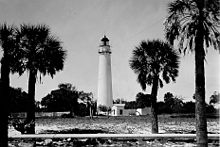
Limited Access Freeways and Expressways:
- Interstate 4 (Florida State Road 400)
- Interstate 75 (SR 93 and 93A)
- Interstate 275 (SR 93)
- Interstate 175 (SR 594)
- Interstate 375
- Interstate 95 (SR 9)
- Florida's Turnpike (SR 91)
- Florida State Road 100 - Moody Boulevard
- Florida State Road 528 - Beachline Expressway
- Florida State Road 408 - Holland East/West Expressway
- Florida State Road 417 - Central Florida Greenway
- Florida State Road 429 - Western Expressway
- Florida State Road 414 - Apopka Bypass
- Florida State Road 570 - Polk Parkway
- Florida State Road 589 - Veteran's Expressway
- Florida State Road 618 - Selmon Expressway
Major Surface Arterials:
- U.S. Highway 441
- U.S. Highway 17-92
- U.S. Highway 27
- U.S. Highway 192
- U.S. Highway 1
- U.S. Highway 98
- Florida State Road 19
- Florida State Road 33
- Florida State Road 46
- Florida State Road 415
- Florida State Road 436
- Florida State Road 50
- Florida State Road 60
- Florida State Road 520
Public transportation

A regional commuter rail network is being developed in Central Florida. The first of these initiatives, SunRail, is a commuter rail line that will run from DeLand south to Kissimmee. The first phase should be complete by 2013 with the full system in place by 2015. Amtrak also serves Central Florida running on CSX Transportation's A line and stops at the Orlando Amtrak station. The Auto Train stops in Sanford, Florida, north of downtown Orlando.
As of 2022, a high speed rail between Orlando and Miami is currently being developed by Brightline, who plans to extend the rail to Tampa after completion.[33]
Education
Florida's public primary and secondary schools are administered by the Florida Department of Education.
- Eckerd College
St. Petersburg - Florida Institute of Technology
Melbourne - Saint Leo University
St. Leo - Florida Southern College
Lakeland - Florida Polytechnic University Lakeland
- University of Central Florida
Orlando - University of South Florida
- University of Tampa
Tampa
Notes
- "Spectrum News | Bay News 9". www.baynews9.com. Retrieved March 11, 2022.
- "Spectrum News | News 13". www.mynews13.com. Retrieved March 11, 2022.
- Lamme & Oldakowski, p. 329.
- Lamme & Oldakowski, p. 335.
- Charting the Course, p. 2.
- Washington, The (January 28, 2008). "As I-4 corridor goes, so goes Florida". Washington Times. Retrieved February 17, 2012.
- "Microsoft Word - FDOT_BD548_07_rpt.doc" (PDF). Retrieved November 4, 2012.
- Archived December 4, 2010, at the Wayback Machine
- "FHP: Florida Facts". Flhsmv.gov. July 1, 2000. Archived from the original on October 3, 2011. Retrieved February 17, 2012.
- "Manhattan, NY Monthly Weather Forecast - weather.com".
- "Average Temperatures in Florida". Current Results. Retrieved February 17, 2012.
- Archived March 25, 2011, at the Wayback Machine
- "Bill's Garden". Garden.bsewall.com. Retrieved February 17, 2012.
- "NWS Pueblo, CO - Lightning Casualty Statistics USA Page". Crh.noaa.gov. August 31, 2010. Retrieved February 17, 2012.
- "NWS Lightning Frequency Safety Map". Lightningsafety.noaa.gov. Archived from the original on January 22, 2012. Retrieved February 17, 2012.
- "East Central Florida". Visulate.com. Retrieved July 2, 2014.
- Type Studies from the Geography of the United States by Charles Alexander McMurry, Macmillan & Company, 1908, page 81.
- Lamme & Oldakowsi, p. 336.
- Warf & Waddell, pp. 88.
- Lamme & Oldakowsi, pp. 336–337.
- Lamme & Oldakowsi, p. 337.
- "Slideshow Failed Conversion". Slideshare.net. Archived from the original on March 20, 2008. Retrieved February 17, 2012.
- Persaud, Babita. "Japanese residents in Central Florida strive to keep their children's legacy alive with Japanese culture and language courses at Orlando Hoshuko school" (Archive). Orlando Sentinel. December 16, 2007. Retrieved on February 16, 2015.
- Bureau of Economic and Business Research (2011). "Florida Population: Census Summary 2010". University of Florida.
- "Crop Profile for Strawberry in Florida". Archived from the original on October 1, 2012. Retrieved January 9, 2014.
- "Florida Agriculture Overview and Statistics". Archived from the original on January 9, 2014. Retrieved January 9, 2014.
- "Hillsborough Cover Story". Archived from the original on January 9, 2014. Retrieved January 9, 2014.
- "Central Florida Research Park". Cfrp.org. Retrieved February 17, 2012.
- "Synergy city: Medical researchers head for Lake Nona - Orlando Sentinel". Articles.orlandosentinel.com. February 13, 2011. Retrieved February 17, 2012.
- "Tampa Bay: High Tech Hotbed".
- "Florida High Tech Corridor e-Newsletter". Archived from the original on January 9, 2014. Retrieved January 9, 2014.
- Welcome to the Central Florida Zoo "Central Florida Zoo.com
- "Brightline Florida | Brightline". www.gobrightline.com. Retrieved March 11, 2022.
References
- Lamme, Ary J.; Oldakowski, Raymond K. (November 2007). "Spinning a new geography of vernacular regional identity: Florida in the twenty-first century". Southeastern Geographer. 47 (2): 320–340. doi:10.1353/sgo.2007.0029. S2CID 129577530.
- Warf, Barney; Waddell, Cynthia (January 2002). "Florida in the 2000 presidential election: historical precedents and contemporary landscapes". Political Geography. 21 (1): 85–90. doi:10.1016/S0962-6298(01)00063-4.
- Anthony J. Catanese Center for Urban and Environmental Solutions at Florida Atlantic University (2006). "Charting the Course: Where is South Florida Heading?" (PDF). Florida Atlantic University. Archived from the original (PDF) on December 16, 2011. Retrieved March 30, 2012.
{{cite journal}}: Cite journal requires|journal=(help) - A History of Central Florida Collection on the RICHES Mosaic Interface Map
External links
 Central Florida travel guide from Wikivoyage
Central Florida travel guide from Wikivoyage- A History of Central Florida Podcast
Другой контент может иметь иную лицензию. Перед использованием материалов сайта WikiSort.org внимательно изучите правила лицензирования конкретных элементов наполнения сайта.
WikiSort.org - проект по пересортировке и дополнению контента Википедии
